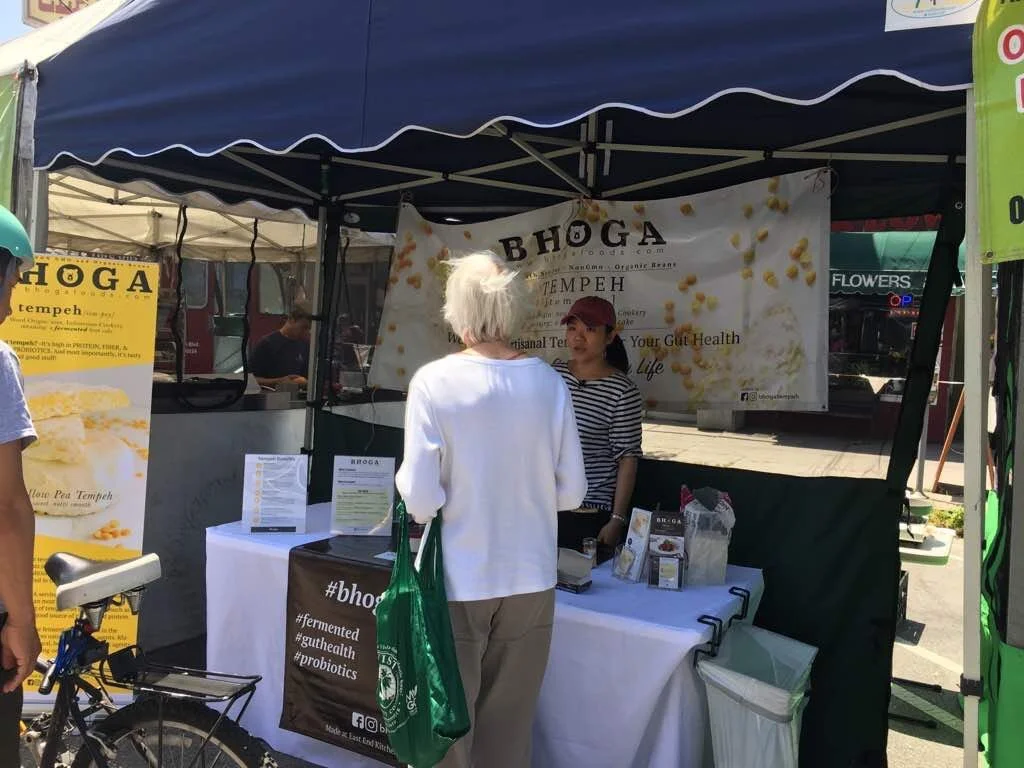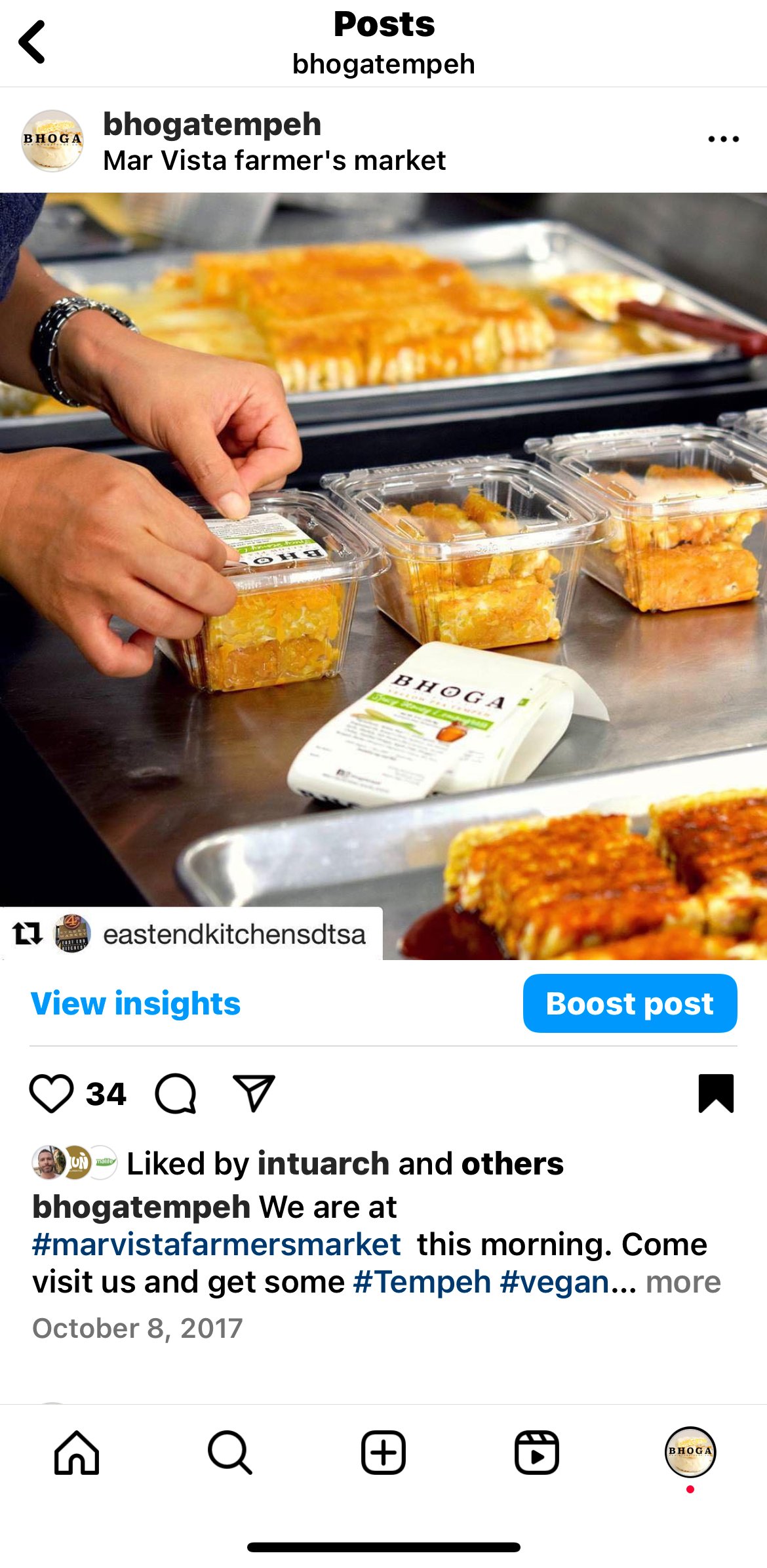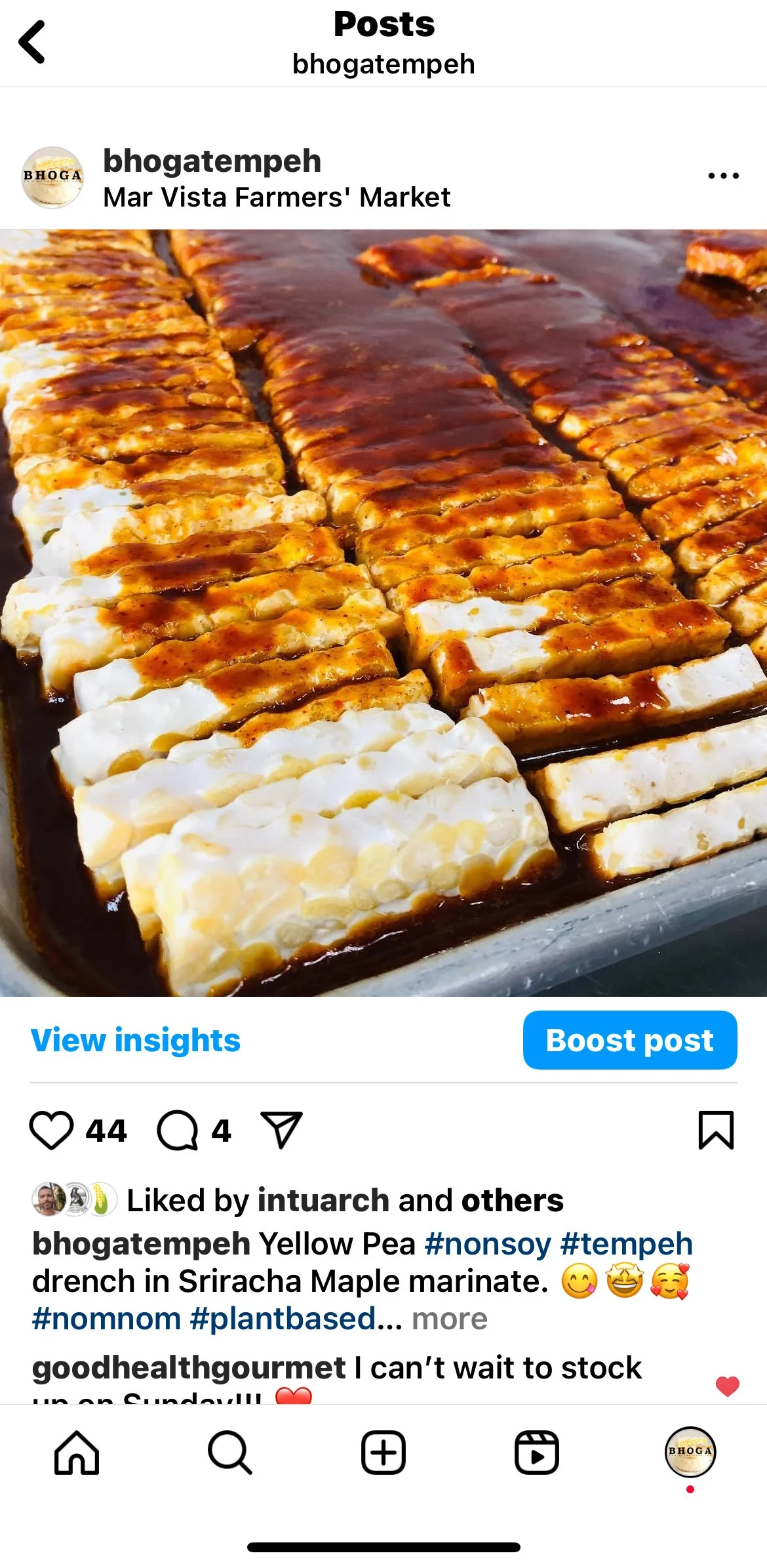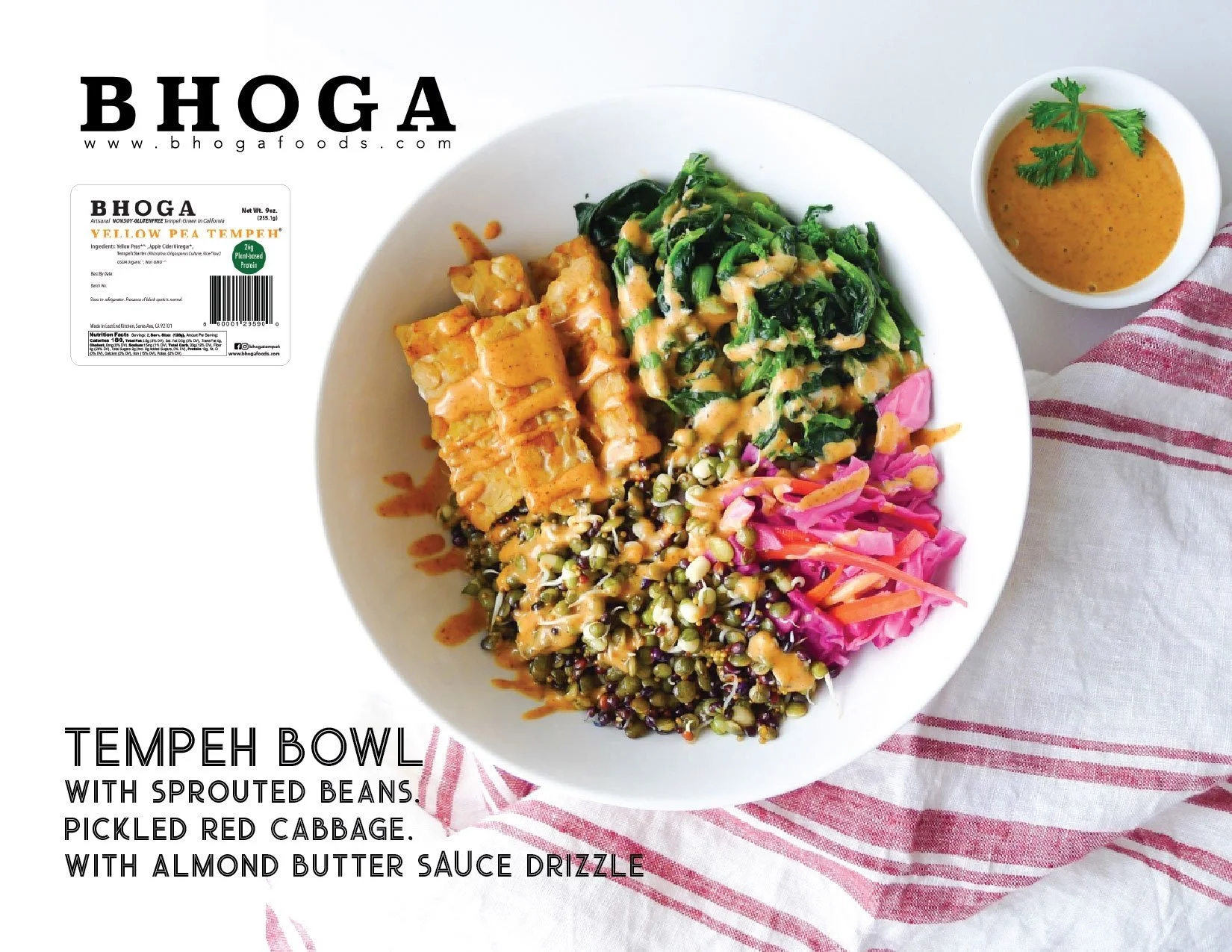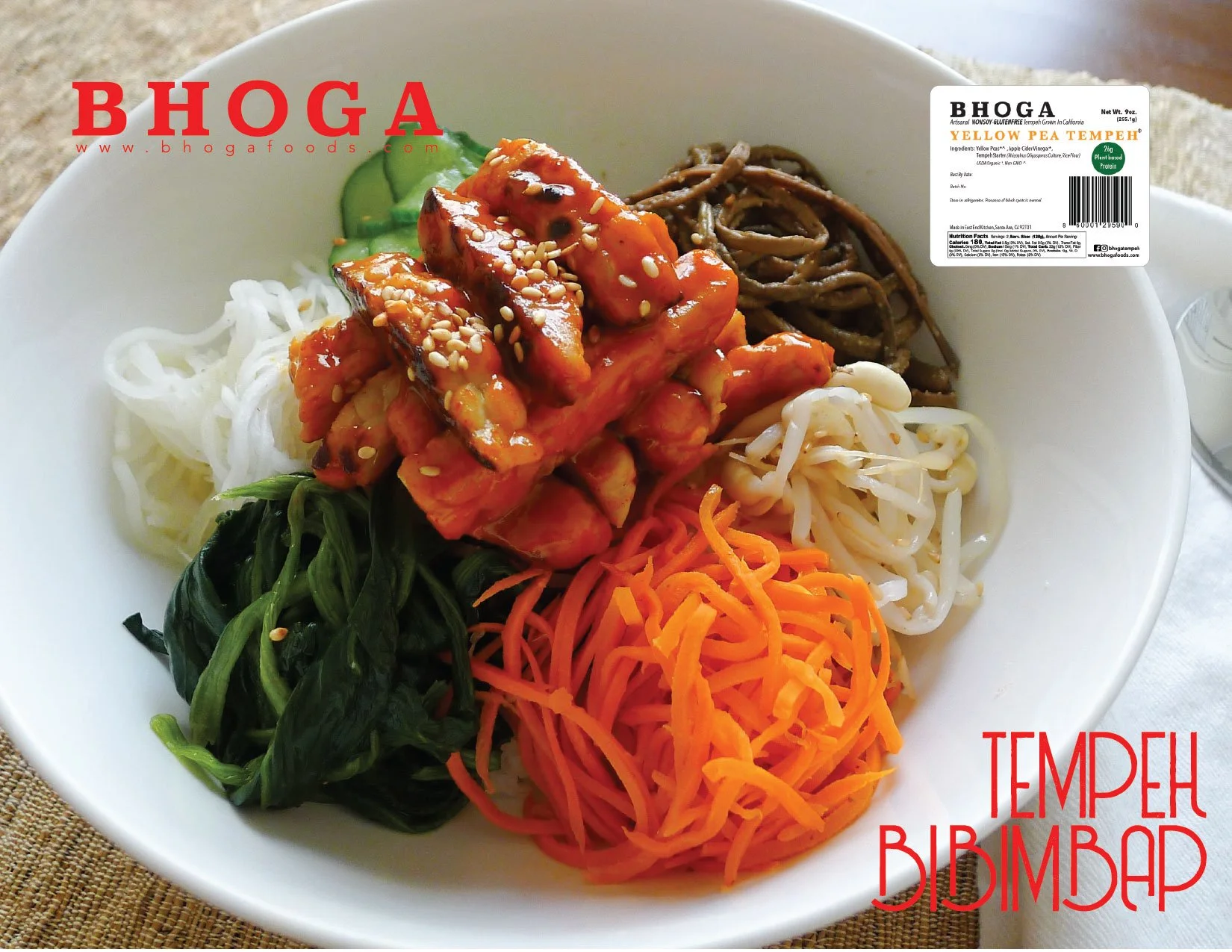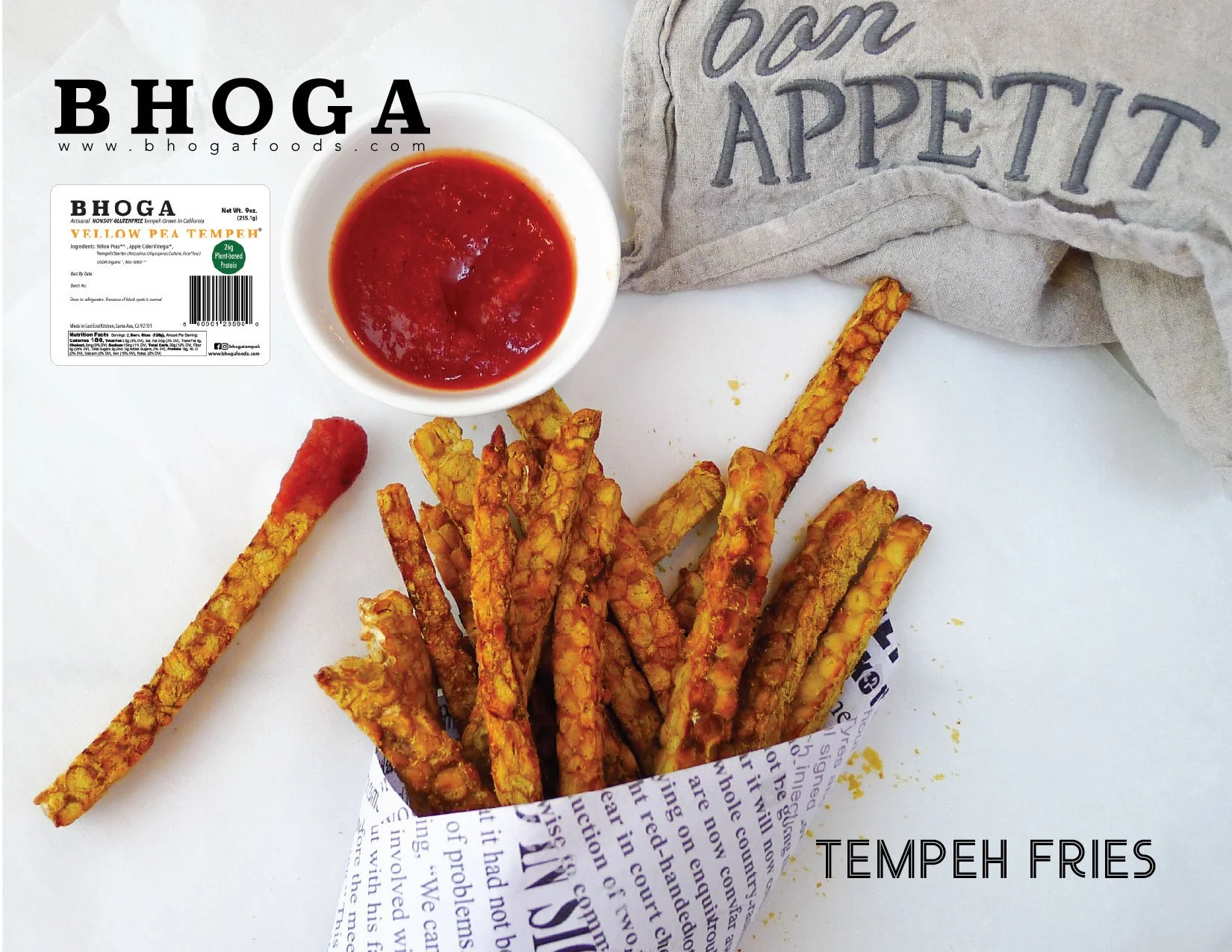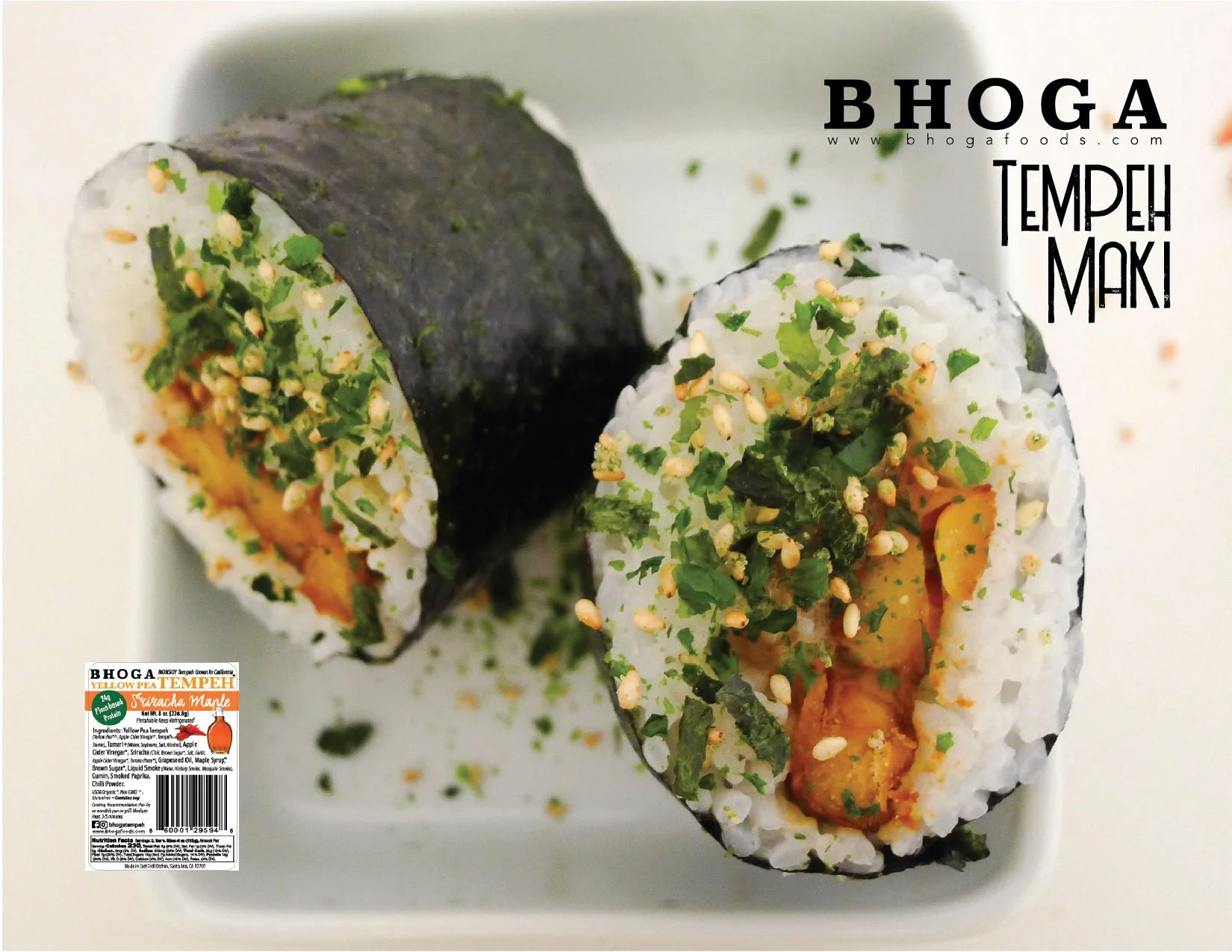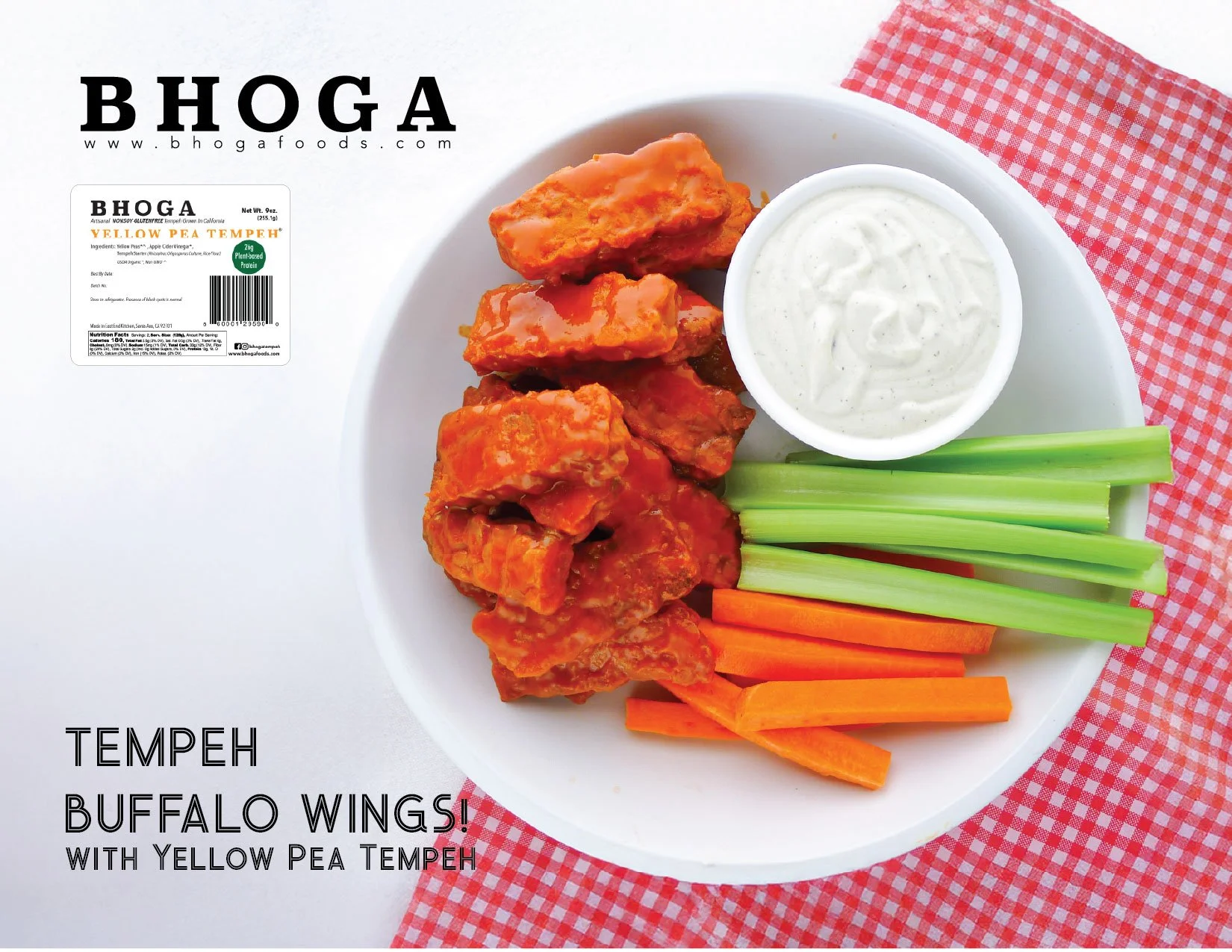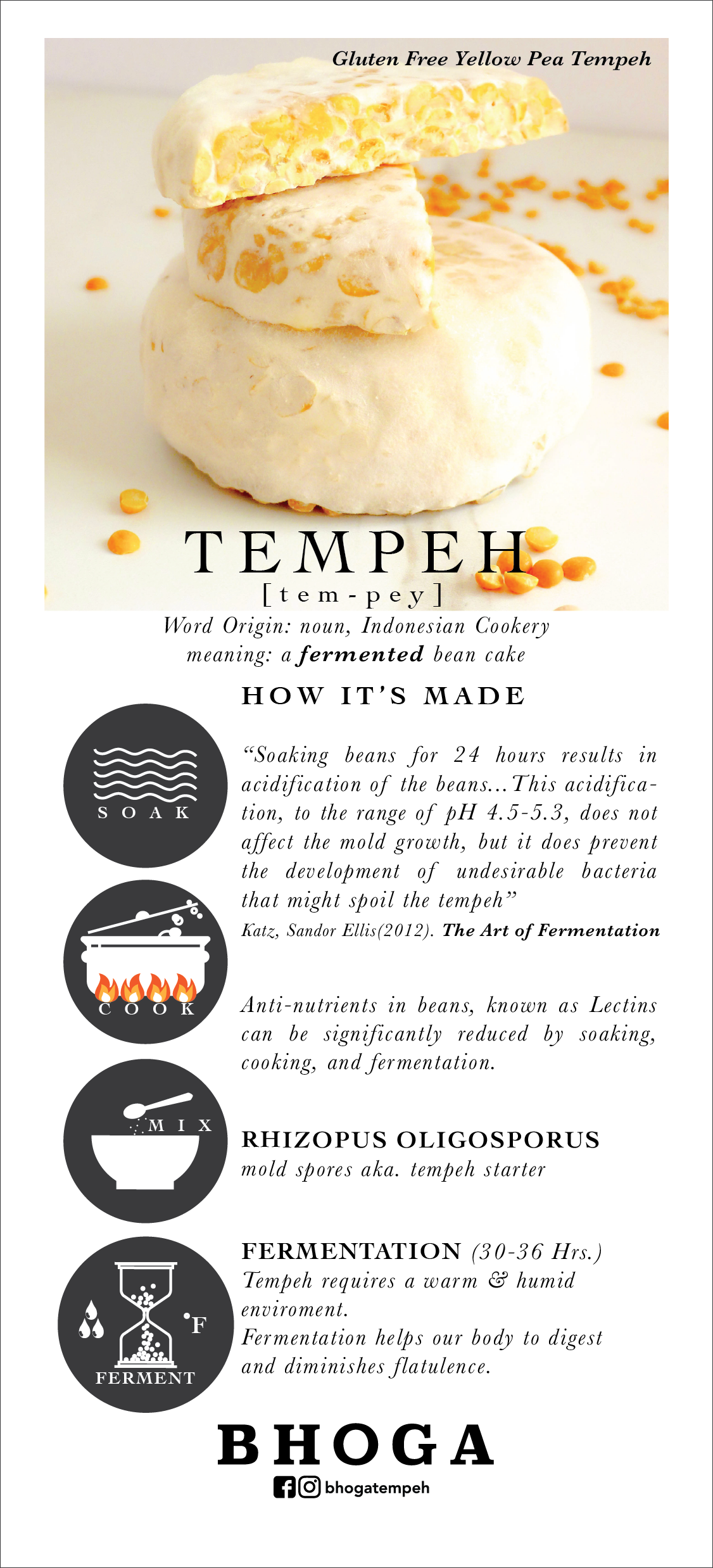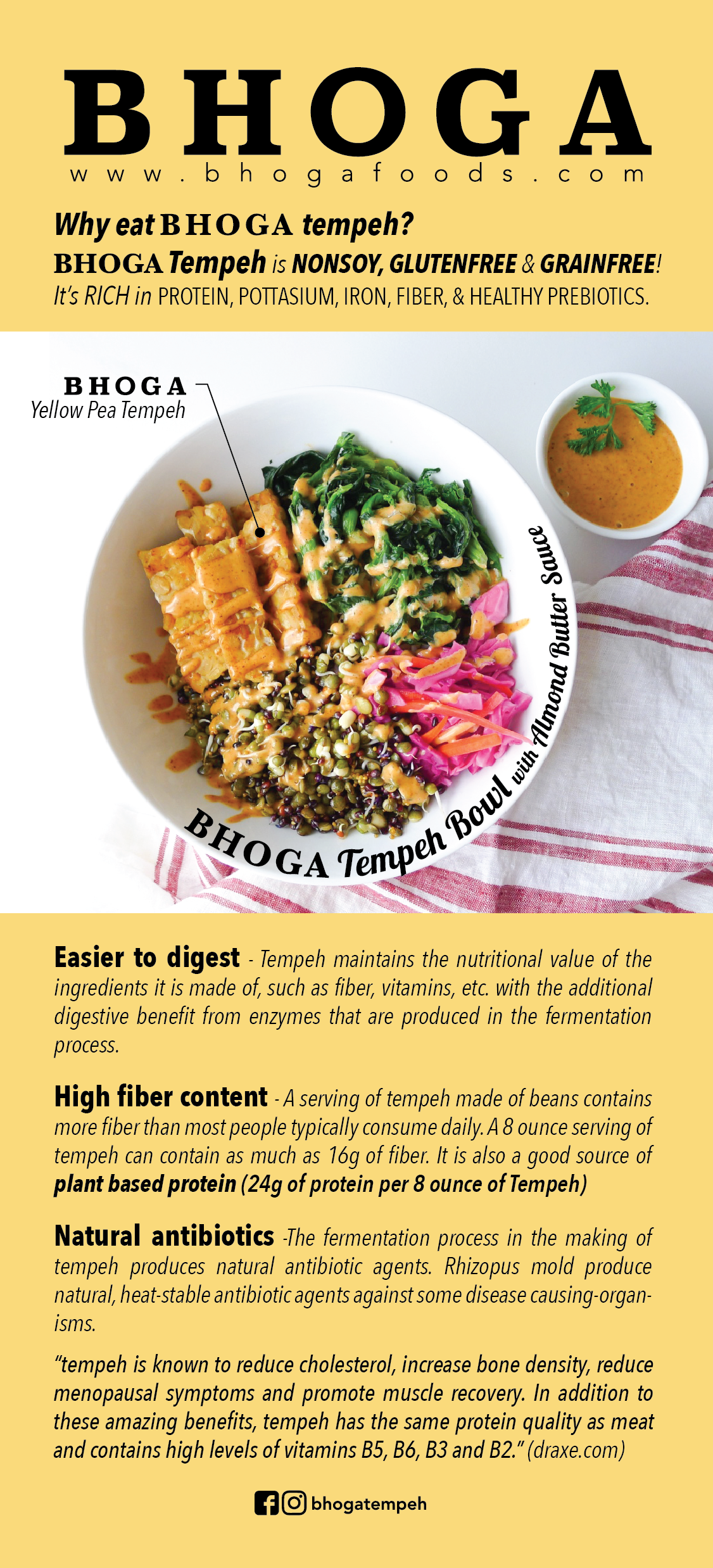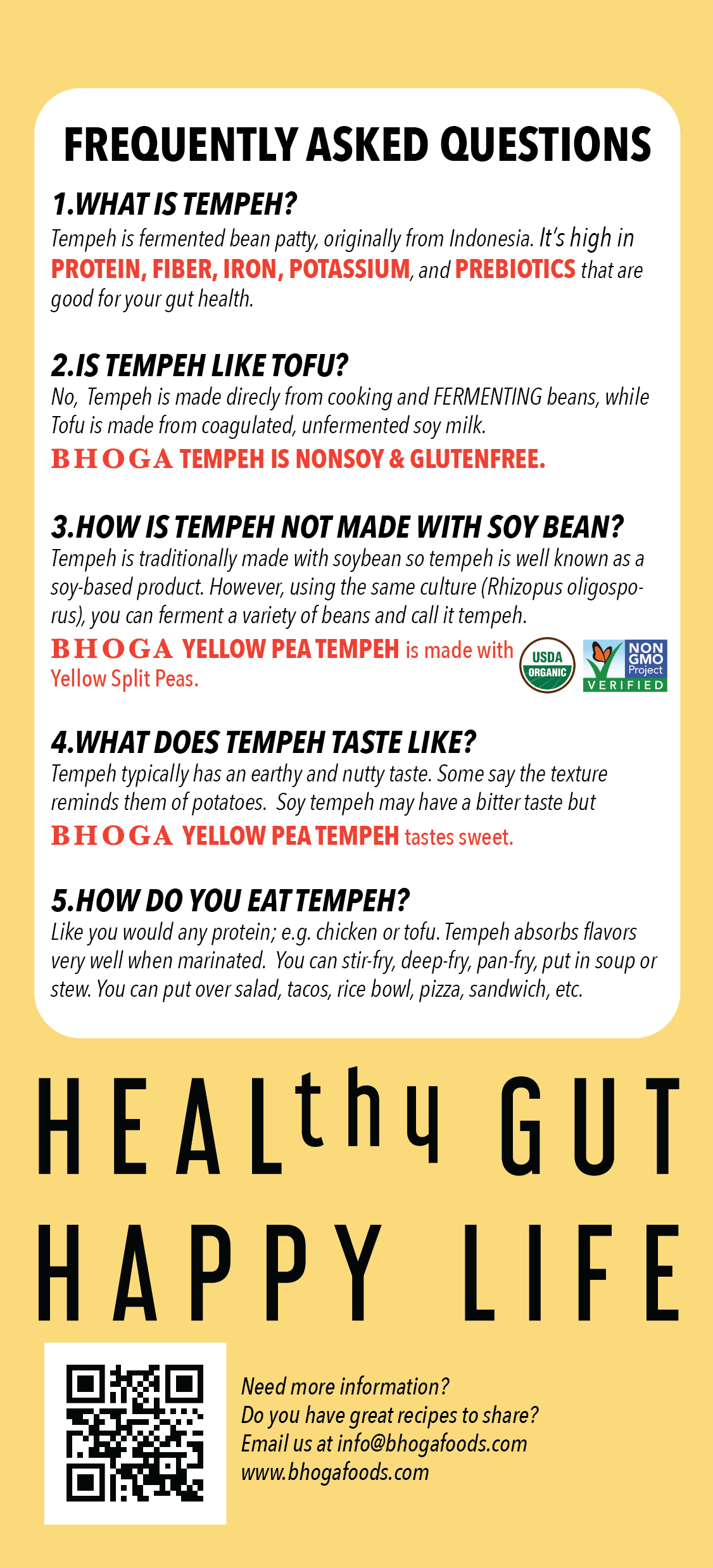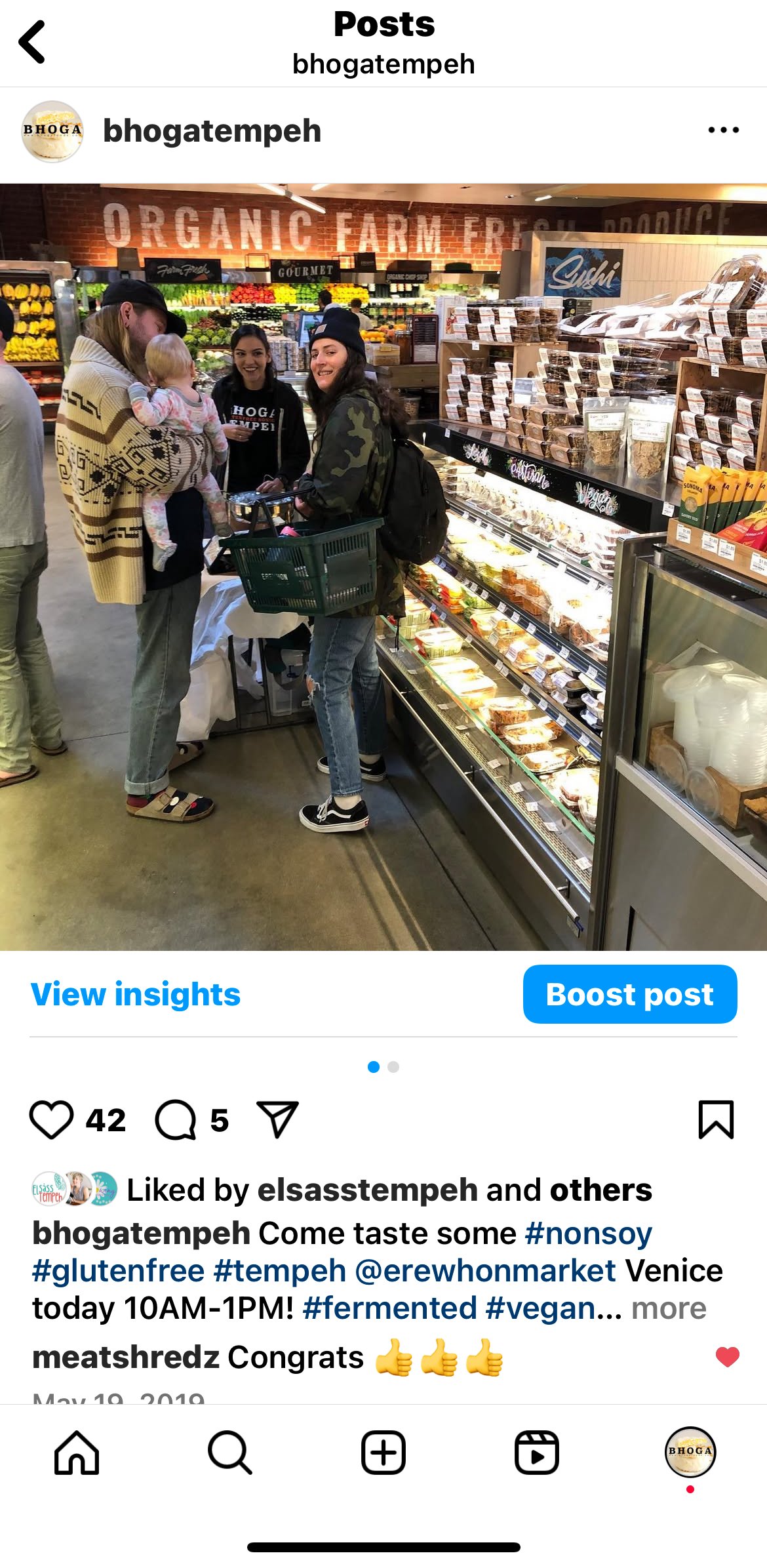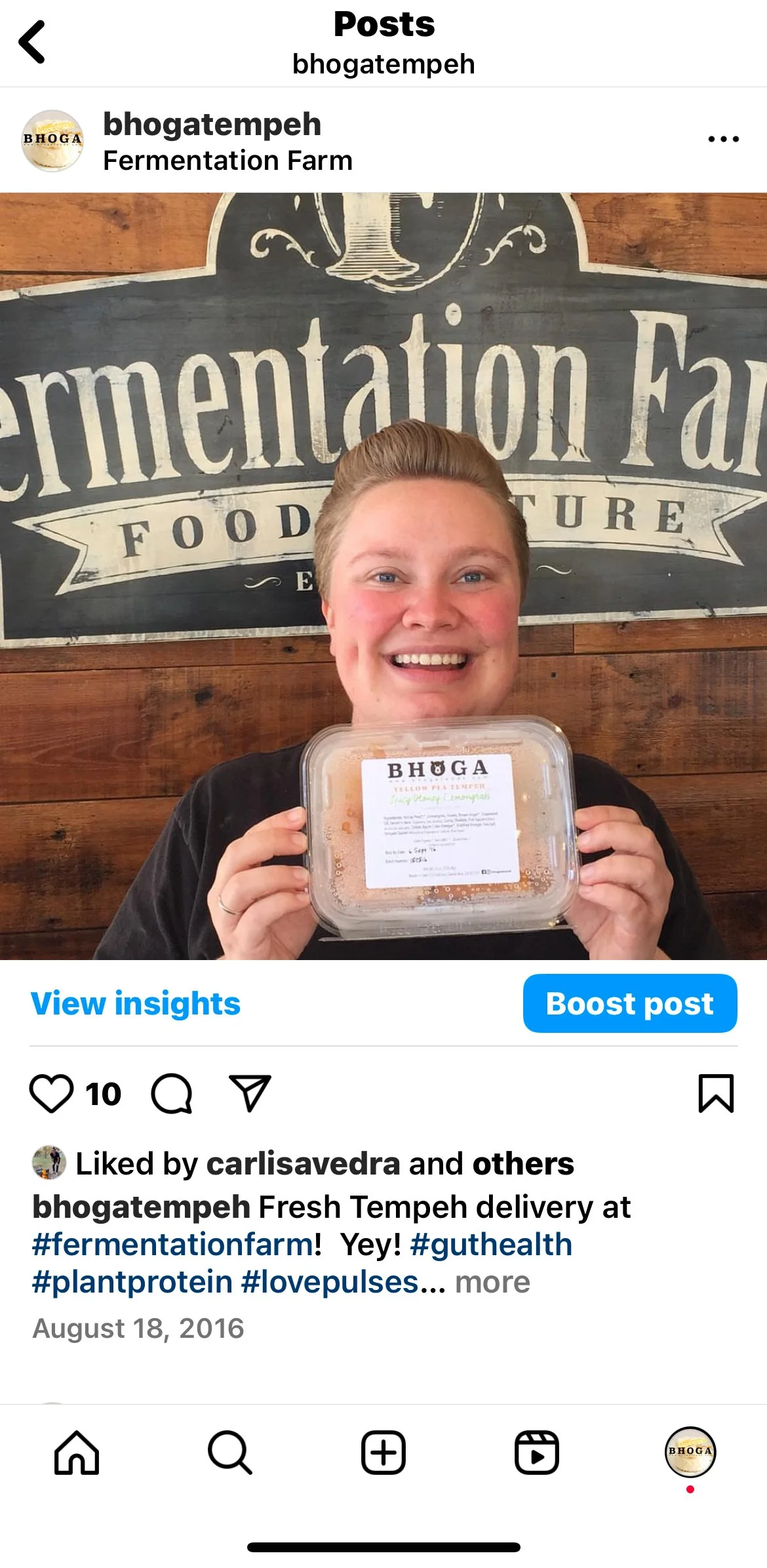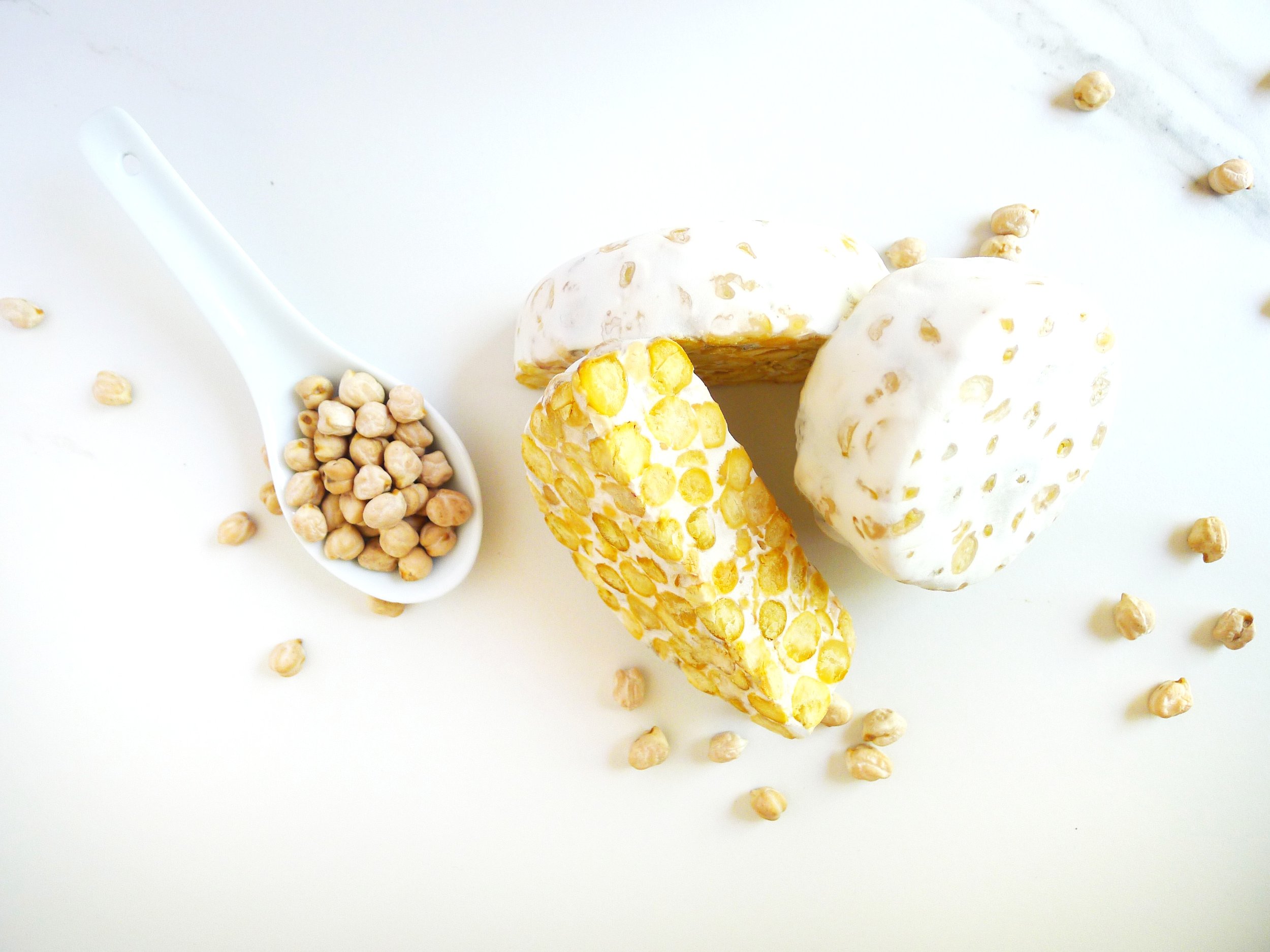
FROM CONCEPT TO SHELF
Bhoga Tempeh: Built, branded, and launched a shelf-ready product.
Project Information
Role: Founder & Creative Director
Skills: Systems Thinking, UX Research, Food Product Development, Brand Strategy, Visual Design, Direct-to-Consumer Marketing.
Duration: 2016-2020
Instagram: @bhogatempeh
The Spark
“Let food be thy medicine and medicine be thy food.” — Hippocrates
A decade-long struggle with gut issues and a reluctance to live on medication, pushed me to heal through food. While researching probiotics during the U.S. “gut-health boom,” I rediscovered tempeh, the naturally fermented Indonesian staple I’d grown up with. It wasn’t “fake meat”; it was whole, minimally processed, and packed with the microbes doctors kept prescribing in pill form. Bhoga Tempeh began as my own prescription for wellness and quickly turned into a design challenge.
The Challenge
Bring a culturally rich, wholesome food to mainstream U.S. eaters, on a shoestring budget and without diluting its soul.
Zero funding, zero staff
Need to educate first-time users who equated plant-based with ultra-processed “meat analogs”
Build product, brand, supply chain, and customer education from scratch
The Insight
People were open to plant-based eating, but they didn’t trust “fake meat” or know what to do with tempeh.
In-person demos and direct conversations at farmers markets and pop-ups revealed a key friction point: many people were curious about tempeh, but unfamiliar with how to prepare it or why it was beneficial. Most had never seen or tasted fresh tempeh before.
This was not just a product challenge. It was a communication challenge.
The Approach
I. Strategic Design Within Constraints
Operated on a lean budget, self-funded and resourceful: minimal equipment, small kitchen, no full-time staff.
Applied systems thinking to streamline production and logistics for small-batch fermentation.
Prioritized product freshness, short shelf-life management, and consistent quality, without scaling prematurely.
II. Human-Centered Product Development
Created and tested 10+ iterations, including marinated and ready-to-cook formats.
Refined based on direct customer feedback: taste, usability, clarity of cooking instructions.
III. Brand Identity + Visual Communication
Designed packaging that communicated preparation ease.
Balanced modern minimalism with warm, earthy cues to reflect the handcrafted nature of the product.
Used @bhogatempeh to educate and engage, featuring new ideas on how to enjoy tempeh.
IV. Direct Engagement + Micro-Community Building
Focused on face-to-face sales to gather insights and grow a base of loyal customers.
Built educational assets—cards, visuals, social posts—to support first-time buyers.
Created a familiar, friendly tone to demystify fermentation and tempeh prep.
Partnered with local businesses to promote the product and foster neighborhood-level community engagement.
What People Said
“It was SO GOOD!
Tonight I made Taco salads for my husband and I with the Chipotle Lime Tempeh! It was SO GOOD! Glad I stopped at your booth! I wish I took pictures of dinner! ”
— Lisa Arch
“Love your products!
Just had some seared on salad less than 5 minutes ago! The BEST!!! #bomb #besttempeh #supportlocal”
— @carlisavedra
“Freaking Delicious!
Just tried this (tempeh) last night at @erewhonmarket. Freaking DELICIOUS! Thanks @bhogatempeh!”
— @gerrykatzman
The Outcome
Built and grew a recognizable brand with zero paid advertising or external funding.
Achieved over 70% return customer rate at local retail and farmers markets.
Introduced hundreds of first-time users to traditional tempeh through education-forward marketing.
Demonstrated that design and storytelling can bridge cultural gaps and build trust—even with minimal resources.

Reflection
Bhoga Tempeh was born out of a need I personally understood: real food, thoughtfully made, and nourishes people.
It pushed me to design across disciplines: operations, packaging, product strategy, brand storytelling, under real-world constraints. I wasn’t working with big budgets or a team of specialists. I had to be scrappy, holistic, and user-driven at every turn.
In hindsight, the most valuable lesson was this: good design isn’t about polish or scale. It’s about usefulness, clarity, and integrity. That’s a philosophy I now bring into every project I take on.

